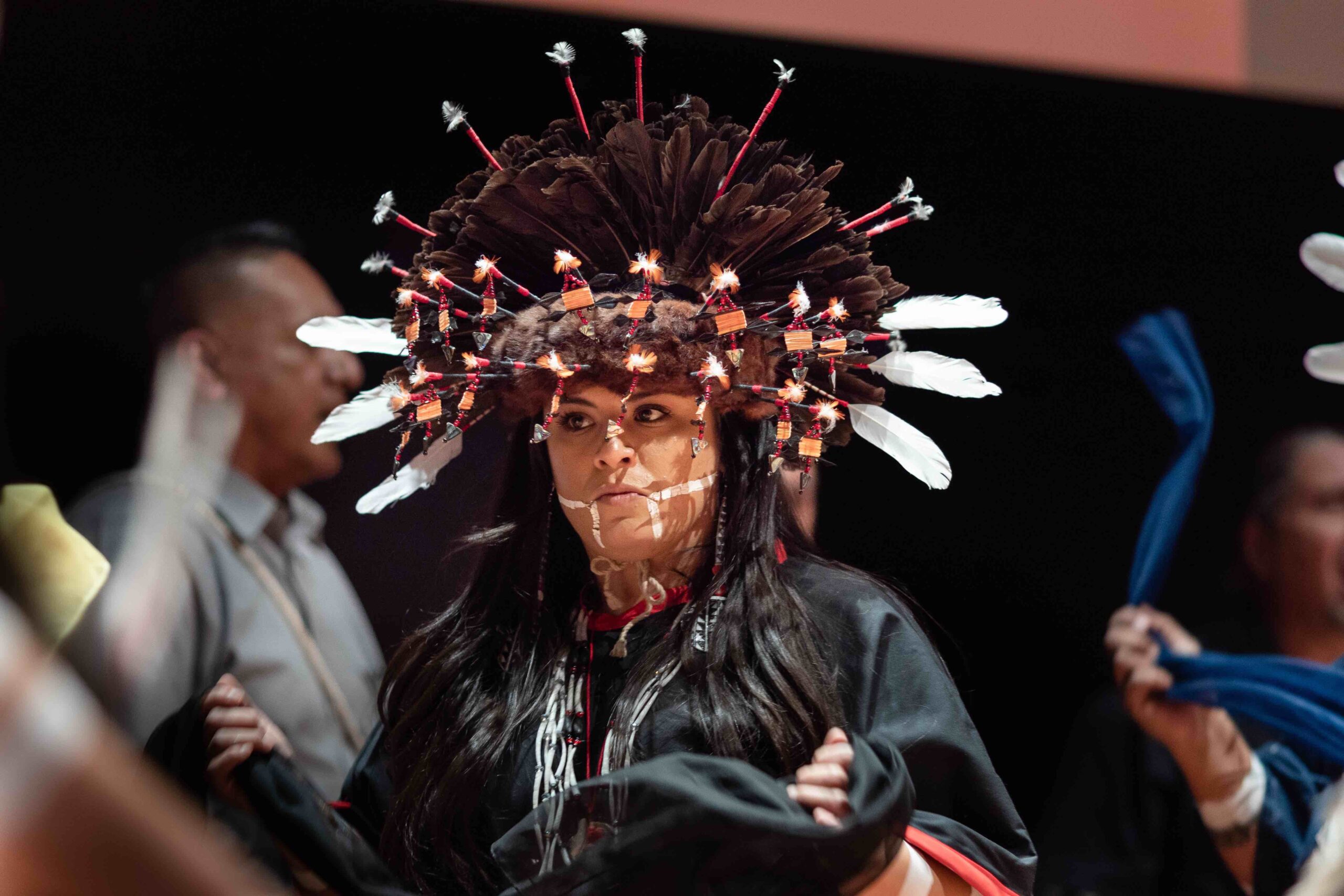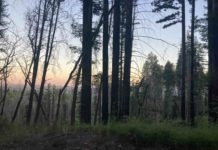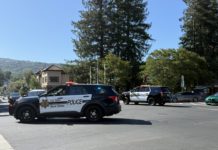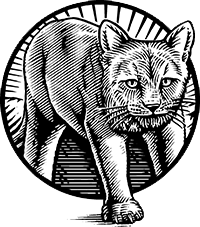Earlier this year while tweaking the history section of the Draft General Plan, Los Gatos planning commissioners suggested zooming-out from the previous version, which only told the story of settler expansion, to also share the history of the original inhabitants.
What may have seemed, to many, a relatively easy—and necessary—change to the Town’s official guiding document, has opened the door to a fraught process involving representatives of two at-odds native groups.
And it’s highlighted the extent to which the Town—despite hearing frequently from single-family homeowners concerned about increased housing production—failed to seriously consult with the First Nations groups about the community’s long-term blueprint.
At the April 25 Planning Commission meeting, Commissioner Kylie Clark explained she’d decided it was important to strengthen the language in the General Plan to clarify that what happened to native people is “widely cited as a genocide,” and make other changes, after speaking with the chairwoman of the Tamien Nation.
It wasn’t until the General Plan came before Council that staff began recommending a more in-depth consultation process “to ensure use of the term ‘Ohlone’ is correct (rather than ‘Tamien,’ for example).”
By the time the General Plan passed, Council had opted to make the wording as generic as possible, going with the term “Indigenous People,” instead of “Ohlone,” with an implementation program added to try to sort things out later.
Days earlier, Council agreed to study a ceremonial land acknowledgment, where the original inhabitants—who never gave up their land through a treaty with the government—would be mentioned at the beginning of public meetings.
The problem is, there’s disagreement over just who that should be.
Due to the wholesale destruction of Aboriginal culture over successive colonial administrations, a Bureau of Indian Affairs that failed to fulfill its duty to find land for Californian tribes when tasked with doing so, and a mission system that resulted in entire tribes going extinct, records are quite spotty.
‘We want to approach this with utmost respect for all parties’
—Town Manager Laurel Prevetti
When the land acknowledgement item came up at Council, Mayor Rob Rennie sought clarity.
“My understanding is the Tamien want to say that they were the original ones, but the Ohlone are trying to say that the Tamien are just part of the Ohlone?” he inquired.
Town Manager Laurel Prevetti said it’s a bit more complex, and involves major disagreements—something that played out recently in San Jose, when it attempted to give a nod to those who came before.
“This is a very delicate topic, and hence the reason why San Jose has enlisted a tribal mediator to assist them,” Prevetti said. “We want to approach this with utmost respect for all parties.”
Councilmember Marico Sayoc, who staff noted has experience working on such matters with First Nations groups, urged including the Muwekma Ohlone at the table and letting each tribe speak for itself, “versus us trying to peel apart the various layers of this very complicated issue.”
During public comment, Alice Miano, a Spanish lecturer in Stanford University’s Division of Literatures, Culture, and Languages, said members of the Tamien Nation were taken from the Santa Clara Valley and exiled to the San Joaquin Valley.
“When we now acknowledge that we now live in occupied territory, when we seek to honor the ancestors of this land, when we seek to shed light on the truth, we can begin—at least in as much as it’s possible in the present—to right the wrongs of the past,” she said.
When Vice Mayor Maria Ristow made a motion for a land acknowledgement—and to read this out at all Council and committee meetings, post it to the Town’s website, and recite it at events around Town—a majority of Council pushed back.
“We have to really craft this message carefully to make sure that we’re not reading rote words, in a mechanical way,” Councilmember Matthew Hudes said.
When the Los Gatan reached out to the Muwekma Ohlone Tribe of the San Francisco Bay Area, its vice chairwoman Monica V. Arellano directed us to its ethnohistorian Alan Leventhal.
When it comes to the possibility of Tamien Nation being recognized by the Town, he didn’t mince words.
“Los Gatos is being hoodwinked,” he said. “Tamien Nation did not exist until after December of 2020.”
And while the Muwekma tribal leadership has been engaged with the Los Gatos community for decades, including working with Forbes Mill and NuMu museums, it didn’t hear from Los Gatos about the General Plan, he added.
“Neither the tribal leadership or I (as the tribal archaeologist and ethnohistorian) have ever been contacted by the City of Los Gatos [sic] with regards to the Los Gatos General Plan on exhibits celebrating the 12,000-year history and heritage of the Muwekma Ohlone Tribe,” he said. “The oldest site which the tribal leadership had worked on is located in the town of Scott’s Valley [sic] which dated approximately 12,000 years ago.”
Aptos History Museum curator John Hibble, who writes a column for sister publication Aptos Life, told the Los Gatan the Scotts Valley site wouldn’t have been from Muwekma Ohlone.
“It wasn’t Ohlone. It was those who were here before,” he said, adding the Ohlone migrated to the area about 6,000 years ago, while the Scotts Valley site is around 12,500 years old. “When you get the real story of history, it’s not all black and white.”
A map hangs in the museum showing Ohlone subgroups (noting some researchers “believe the variations represent as many as eight distinct language groups.”)
The name “Tamyen” appears to cover the region that includes Los Gatos and San Jose, with the (apparently extinct) Awaswas group denoted for the Santa Cruz area, and the Mutsun to the south.
Hibble said remaining Ohlone groups have been attempting to gain federal recognition, which can be helpful for securing benefits and could open the door to building a casino.
“The Ohlone people are not a recognized tribe,” he said. “They’re all interested in getting recognition…They’ve been working really hard.”

Muwekma’s bid denied
The BIA, now under the first Indigenous leader of the Interior Department, Deb Haaland, has been evaluating petitions from several local native groups in recent years.
In addition to the Muwekma, these include the Coastanoan Band of Carmel Mission Indians, the Indian Canyon Band, the Amah Band, the Esselen Tribe of Monterey County, the Esselen Nation, the Costanoan-Rumsen Carmel Tribe, the Costanoan Ohlone Rumsen-Mutsun Tribe, and the Costanoan Tribe of Santa Cruz and San Juan Bautista Missions.
“The existence of these other Costanoan or Ohlone petitioners reveals…that the Muwekma petitioner does not have an uncontested claim to represent the descendants of all the Ohlone of the San Francisco Bay Area or all the territory of Costanoan-speaking peoples,” the BIA wrote in a 2001 proposed finding, adding it received another letter of intent to file for recognition from a Stockton-based group chaired by Katherine Perez, who’d been a councilmember of the Muwekma in the 1990s.
“The evidence indicates that 48% of the petitioner’s members descend directly from an Indian individual on either the 1905-1906 Kelsey census of Pleasanton or Nile, or the 1910 Federal census of ‘Indian town,’” the document states, referring to an Indian Agent’s survey of the East Bay. “The petitioner has identified eleven pre-mission villages from which it claims its members have lineal descent…According to the petitioner’s map of their locations, all of these villages were north or east of Mission San Jose and the Alisal rancheria…Although the petitioner has applied the name ‘Muwekma’…there is no available evidence that this was a name used historically for a specific group of Ohlone by either outside observers or by Ohlone descendants.”
Their bid for federal recognition was denied in September 2002, largely because they were unable to demonstrate they continued to operate continuously throughout the 20th century.
Muwekma’s leadership blame this in-part on residential schools that assimilated native people into mainstream American culture.
The BIA also raised questions about how the group’s tribal leadership originally came to power.
Leventhal told the Los Gatan the Muwekma moved to the East Bay because they were driven out of Los Gatos—and other Bay Area locations—by racist settlers.
Kent G. Lightfoot, in his book Indians, Missionaries, and Merchants: The Legacy of Colonial Encounters on the California Frontiers, explains the places they escaped to in the East Bay turned into a complex mixture of Ohlone, Yokuts, Patwin, Miwok and Esselen peoples.
Lightfoot notes that Leventhal has been involved in helping portray this demographic blend in a positive light, characterizing it as having “produced a ritually and ceremonially syncretic cultural revival.”
In November 2021, Charlene Nijmeh, Muwekma’s chairwoman, wrote an op-ed in the Daily Californian, an independent student newspaper at UC Berkeley, that took an expansive view on who she believes she should be leading.
“The Muwekma people deserve justice, and it can only be served when the citizens in the San Francisco Bay Area demand for their Congressional representatives and senators to champion justice for the tribe of the area,” she wrote. “Muwekma is composed of all the known surviving American Indian lineages aboriginal to the Bay Area who trace their ethno-historic origins from the indigenous tribes who continuously occupied these lands for more than 10,000 years.”
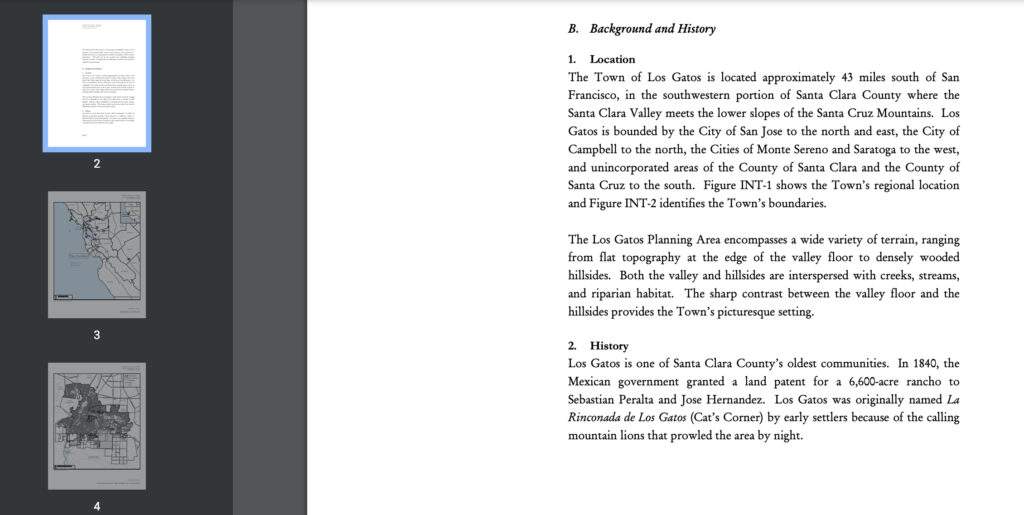
‘They’re on our lands’
Quirina Luna Geary, the 52-year-old chairwoman of the Tamien Nation, says she believes the Muwekma want to increase their legitimacy around the Bay Area—in areas they can’t prove they used to reside—in the hopes of someday getting a casino.
“That’s a form of erasure,” she said. “It’s causing a lot of friction and issues.”
Geary traces her own ancestry back to the San Jose area in the 1700s.
She also descends from a Mutsun lineage, was previously part of the Amah Mutsun Tribal Band of Ohlone Costanoan Indians and even co-wrote a Mutsun dictionary.
Geary married into the Elem Indian Colony Rancheria, in Lake County, where she now lives. She says there are hundreds of Tamien Nation members currently living near Madera who have been maintaining Tamien cultural traditions.
And while Geary may dispute much of what the Muwekma claim, she agrees with them on one thing—Los Gatos didn’t do enough to consult with First Nations before passing its General Plan.
“They’re on our lands,” she said. “They’re making decisions on critical issues that affect our homeland.”
Leventhal says he personally told the Geary family their group wouldn’t meet the government’s criteria for federal recognition.
Ami Davis, NuMu’s executive director, said the Los Gatos institution has partnered with the Muwekma on another exhibit, scheduled to open in November.
Prestigious funders, such as the California Arts Council and SVCREATES, have been lining up to support it, she added.
“For us, it’s really giving them a platform to share their story, their history, their current activities,” she said. “For many decades now, the Ohlone have not been federally recognized—they haven’t been getting the kind of programs and resources that the federal government has for native people.”
Geary says the exhibit under development came to her attention via someone who is Ramaytush—the group generally considered the Ohlone people who lived north of Los Gatos along the peninsula—asking permission to participate.
“You have my blessing,” she says she responded.
Geary urges arts organizations to take a collaborative role in working with native groups from the get-go, not just seeking late-in-the-game cooperation in order to secure grants.
And she says Indigenous people shouldn’t be asked to consult without compensation.
“This is one of my main pet peeves that I have with agencies and organizations: they want free labor from us,” she said. “They’ll pay everyone else but they won’t pay the Indian people.”


